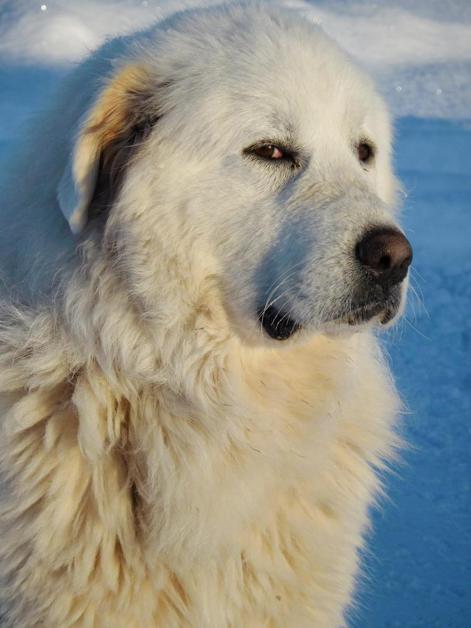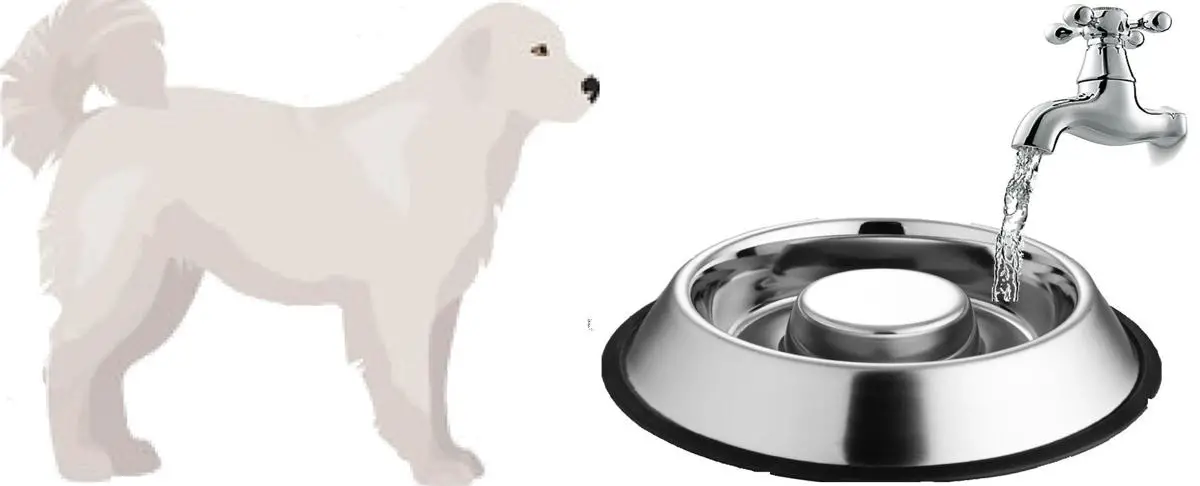Quick Links: Table of Contents
- Great Pyrenees Breed Overview
- History of the Great Pyrenees Breed. Where Great Pyreneess came from
- What the Great Pyrenees Looks Like
- How Much is the Great Pyrenees Puppy?
- Best Great Pyrenees Breeders
- Adopting or Rescuing the Great Pyrenees
- Great Pyrenees Growth
- The Temperament of the Great Pyrenees
- How Long Great Pyreneess Live
- Great Pyrenees Litter Size
- How Fast Great Pyreneess Can Run
- Good Names for Great Pyreneess
- How Intelligent are Great Pyreneess?
- How Popular are Great Pyreneess with New Dog Owners?
- Health Problems in Great Pyreneess and How to Prevent Them
- How to Take Care of Great Pyrenees
- Dog Breeds That Are Similar to Great Pyreneess
- Other Things to Know About Great Pyreneess
Great Pyrenees Breed Overview
The Great Pyrenees is a giant-sized dog.
The adult Great Pyrenees stands 25 to 32 inches tall at the shoulder.
The Great Pyrenees belongs to the Working Dogs group.
Dogs in the Working Dogs group, like the Great Pyrenees, were developed to assist humans in some capacity – including pulling sleds and carts, guarding flocks, guarding homes, and protecting their families.
Breeds in the Working Group are known for their imposing stature, strength, intelligence, and fearless.
Because of their size and strength, working dogs require a structured home life and firm, fair, consistent training by someone who can provide leadership without resorting to anger or physical force.
The fact that the Great Pyrenees belongs to the Working Dogs group is one of the reasons why Great Pyreneess have the personality and temperament that they have.
The temperament of the Great Pyrenees is generally described as:
- Affectionate
- Confident
- Fearless
- Gentle
- Patient
- Strong Willed
History of the Great Pyrenees Breed. Where Great Pyreneess came from
In the United States and Canada, these dogs are known as Great Pyrenees, but in most of Europe and the United Kingdom, they are known as Pyrenean Mountain Dogs.
The Pyrenees Mountains, which separate France and Spain, are the origin of these dogs, hence the name.
These dogs` ancestors are thought to have originated in Asia Minor between ten and eleven thousand years ago.
This breed was developed with the intention of producing a dog that would assist and work with shepherds.
The Great Pyrenees were considered peasant dogs until 1675, when the Dauphin of King Louis XIV`s court declared them to be the Royal Dog of France.
.
What the Great Pyrenees Looks Like
The Great Pyrenees have water-resistant double coats.
They do well in cold weather because of their coarse, long, and thick topcoat, which is never curly but can be straight or wavy.
Their overcoat is both woolly and dense.
A rough mane will be visible around the neck, especially in males.
Feathering on the back of the legs will be present as well.
Hair will be short and fine around the ears and face.
These dogs are mostly white, with gray, tan, reddish-brown, or badger-colored markings on the ears and head, tail, or sometimes the entire body.
These colored markings will not cover more than one-third of the surface area.
The bodies are typically longer than tall, with a level backline.
They have wedge-shaped heads that are slightly rounded, and the dog`s muzzle is roughly the same length as the back of the skull.
The Great Pyrenees have black lips and noses, as well as scissor bite teeth that are level.
The slanted eyes will be medium in size, almond in shape, and dark brown in color.
The ears are carried close to the head, low and near eye level, and are V-shaped with rounded tips.
These dogs have fairly broad chests and bushy tails that can be carried low, almost to the hocks, or high up in a wheel when excited, and will occasionally have a crook at the end.
.
How Much is the Great Pyrenees Puppy?
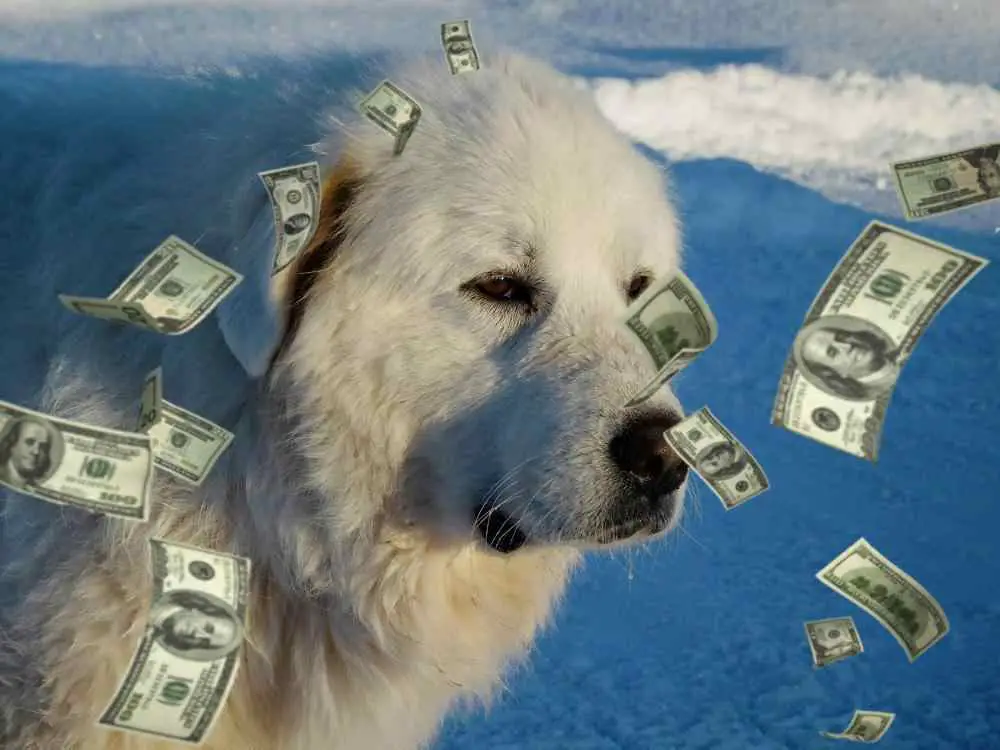
The average price of a Great Pyrenees puppy is $830. The price of a Great Pyrenees puppy ranges from $500 to $1000.
A lot of factors determine the price of the Great Pyrenees. These factors include what health records the Great Pyrenees puppy has, the lineage of the Great Pyrenees puppy, the US state the breeder is located in, etc.
To estimate how much you can expect to pay for a puppy Great Pyrenees based on the many factors that determine the price of the Great Pyrenees puppy, check out our calculator that lets you estimate how much you should expect to pay for the Great Pyrenees puppy based on what you want in the puppy.
When looking to buy a puppy, look at buying a puppy only from well-established breeders that breed puppies primarily for the love of the Great Pyrenees breed, and secondarily for profit. Do not buy a puppy from a puppy mill. Puppy mills mass-produce puppies in bad living conditions for maximum profit.
You may also consider adopting instead of buying a puppy. Adoption costs are very low compared to the price of a puppy.
Best Great Pyrenees Breeders
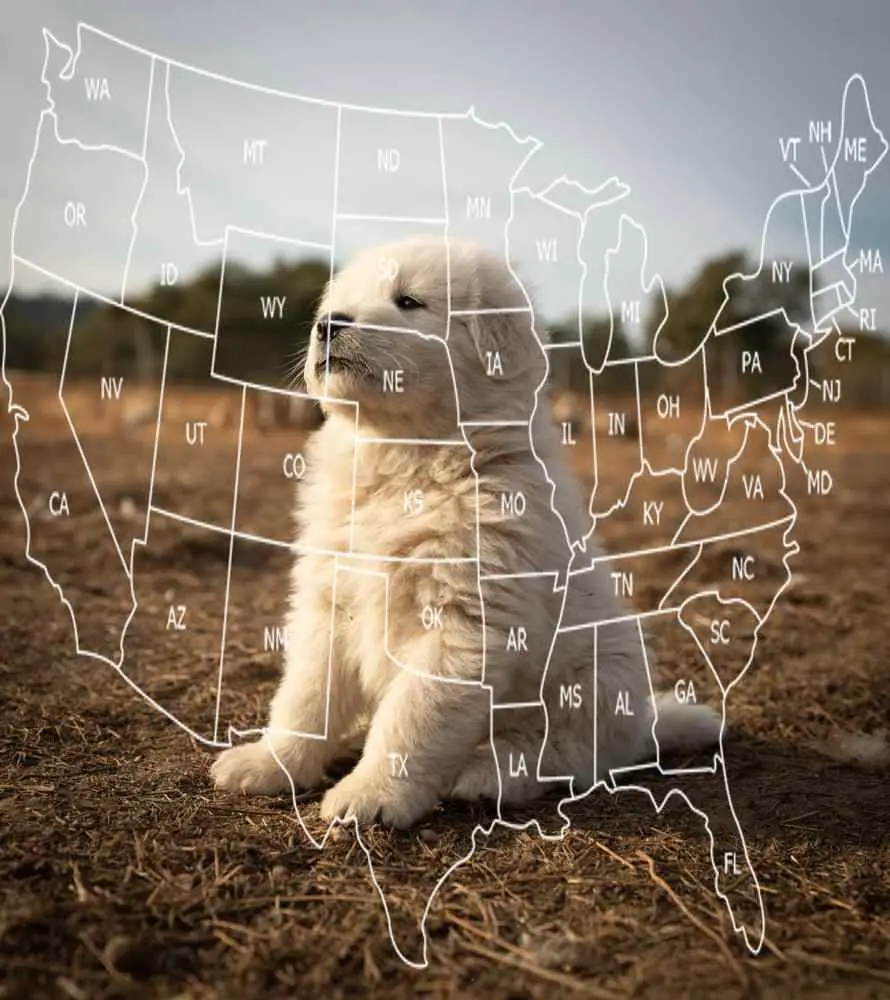
We have researched reputable Great Pyrenees breeders that you can buy a puppy.
Go to this page for our complete list of reputable Great Pyrenees breeders in various states in the United States.
On this page, you will see how much these breeders sell their puppies for, and how many puppies they have available.
A few of these breeders are listed below.
Naches Heights Ranch
Puppy Price: $1000.00
Adam Forrest
Puppy Price: Check with breeder
JoAnn Winks
Puppy Price: Check with breeder
Rehoboth Farms of VA
Puppy Price: $750.00
Neverland Farm LLC
Puppy Price: Check with breeder
Adopting or Rescuing the Great Pyrenees
You may consider adopting a dog instead of buying a puppy. Many dogs, Great Pyreneess included, are currently available for adoption in your local dog shelters.
These helpless but adorable dogs are waiting in dog shelters hoping that someday someone will rescue them. Dog adoption costs are lesser than the cost of a new puppy. Dog adoption costs are usually around $300 or even less.
In addition to your local dog shelter, another good place to find dogs that are available for adoption is petfinder.com.
Below is an adorable Male Great Pyrenees named Kingston that is currently available for adoption on Petfinder.com. You can find other lovely Great Pyreneess like Kingston on pefinder.com.
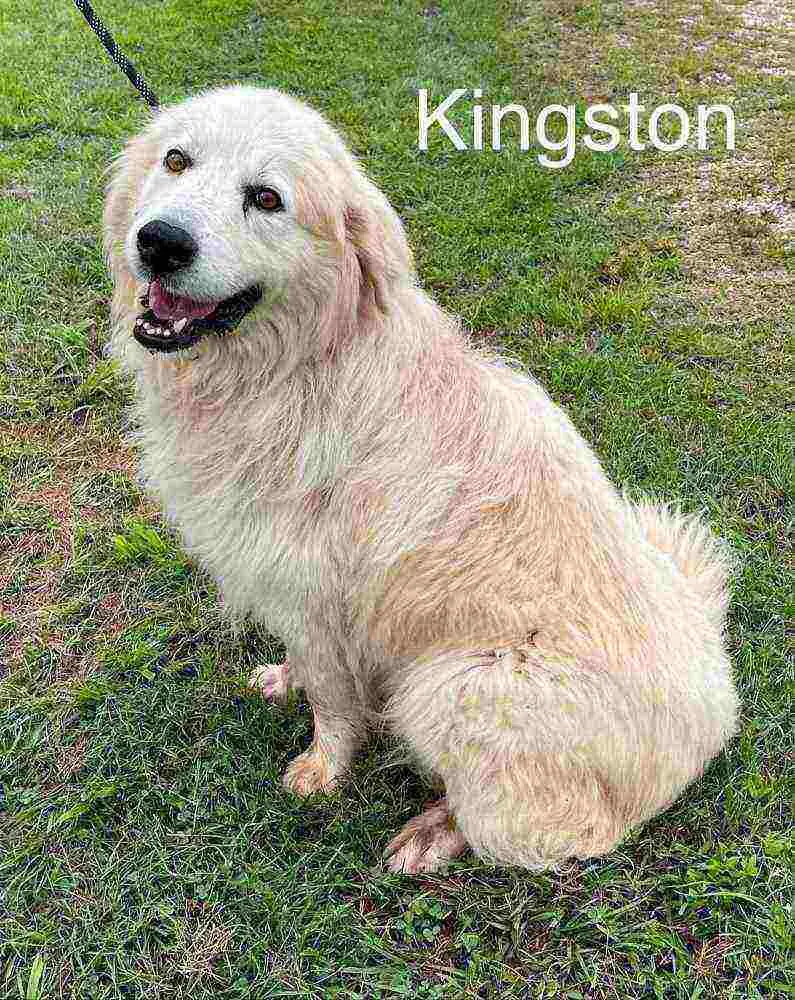
“Apollo”#9887 is the name of another Great Pyrenees (Male) on petfinder.com that is looking for a new forever home.
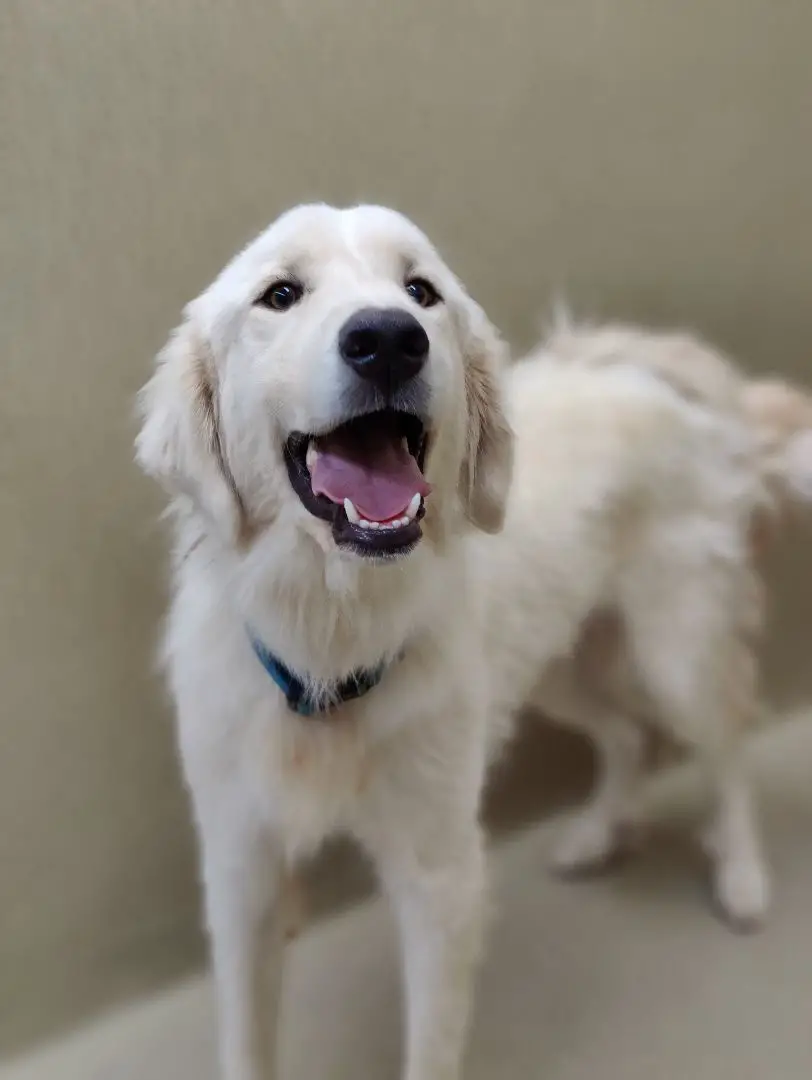
You can find more Great Pyreneess that are available for adoption on petfinder.
Great Pyrenees Growth
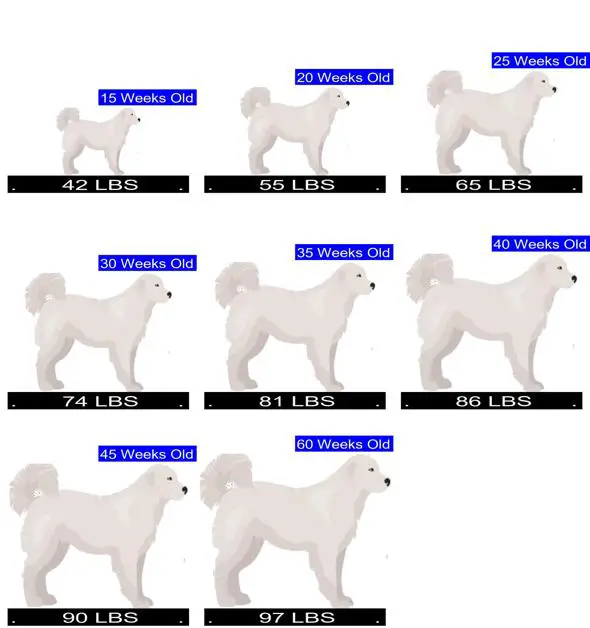
New Great Pyrenees owners need to know about the growth of their Great Pyreneess. This will help them plan their living spaces accordingly.
Also, knowing the typical growth pattern of the Great Pyrenees will help new owners catch the abnormal growth of their Great Pyrenees early.
See our calculator for predicting how big your Great Pyrenees puppy will get. You will also learn about the typical weight of the Great Pyrenees at different ages and how to catch abnormal growth in your Great Pyrenees
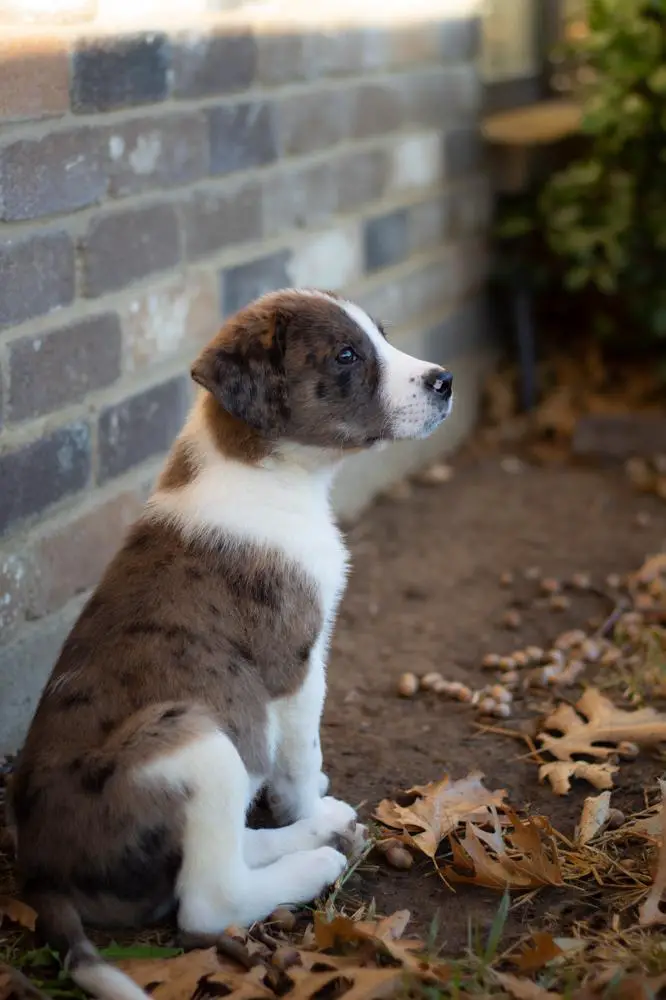
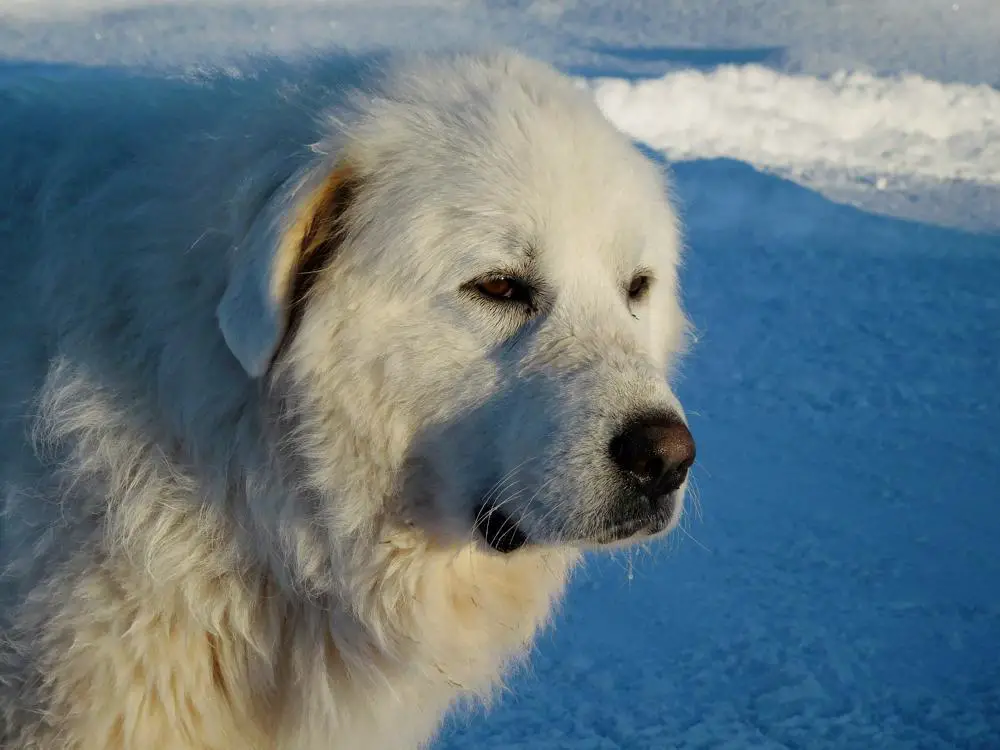
The Temperament of the Great Pyrenees
The temperament of the Great Pyrenees based can be summarized as in the table below.
The table shows the scores of the Great Pyrenees for 13 important dog behavioral factors.
We obtained these scores by analyzing raw data from the C-BARQ dog personality survey tool. The higher the score of a dog for a factor, the worse the temperament of the dog regarding that factor.
The C-BARQ tool was developed by researchers from the University of Pennsylvania, and it is a scientific tool that is used worldwide for reliably measuring the temperament of dog breeds.
See our complete analysis of the temperament of the Great Pyrenees here.
| Factor | Score |
|---|---|
| Excitability | 6.2 percent |
| Separation Related Behavior | 53.0 percent |
| Stubbornness | 49.8 percent |
| Stranger Directed Aggression | 36.0 percent |
| Dog Rivalry | 34.0 percent |
| Stranger Directed Fear | 32.5 percent |
| Nonsocial Fear | 29.7 percent |
| Dog Directed Aggression | 28.8 percent |
| Attachment Attention Seeking | 21.6 percent |
| Touch Sensitivity | 20.2 percent |
| Energy Level | 17.1 percent |
| Dog Directed Fear | 16.8 percent |
| Prey Drive | 14.3 percent |
| Owner Directed Aggression | 12.4 percent |
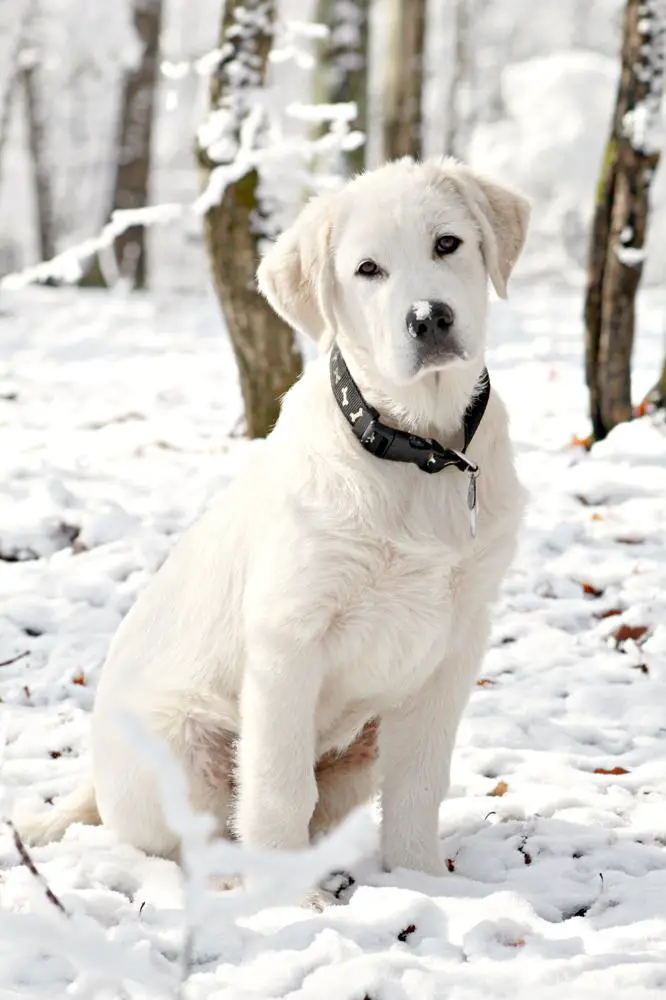
How Long Great Pyreneess Live
The lifespan of the Great Pyrenees is typically from 10 to 12 years.
Moreover, a few years back, veterinarian researchers performed a scientific study to determine the lifespan of the Great Pyrenees. In this study, the scientists collected data on how long 66 pet Great Pyreneess lived.
From the study, it was found that Great Pyreneess have an average lifespan of 9.58 years. Furthermore, the study found that it is not uncommon for Great Pyreneess to live as long as 16 years.
Note that you need to put in some effort if you want your Great Pyrenees to live long.
Great Pyreneess live long if they eat well, drink well, exercise well, and visit the veterinarian regularly.
There are also dog supplements that you can give your Great Pyrenees to improve your Great Pyrenees`s quality of their life.
Click here to learn more about how to make your Great Pyrenees live long.

Great Pyrenees Litter Size
Researchers from the Norwegian School of Veterinary Science did a study where they counted the numbers of puppies in 14 different Great Pyrenees birth litters.
From this study, the researchers found that the average number of puppies that Great Pyreneess can have is 7 puppies. Also, the Great Pyrenees can have as few as 2 puppies per litter and as many as 10 puppies per litter.
The number of puppies that the Great Pyrenees will have depends on factors such as the age of the Great Pyrenees, the method of pregnancy, etc.
Click here to see our calculator for predicting how many puppies your Great Pyrenees will have and how the litter size of the Great Pyrenees compares to the litter size of other dog breeds.
How Fast Great Pyreneess Can Run

How fast a dog breed can run is a good measure of how athletic the dog breed is.
The American Kennel Club (AKC) regularly conducts dog running competitions. The AKC records the running speed of competing dogs in these competitions. These competitions are open to all dog breeds.
Based on our analysis of the speeds of 38 different Great Pyreneess, the average speed of the Great Pyrenees is 19.7 mph (31.6 kmph).
The fastest speed on AKC record that the Great Pyrenees ran in a race is 24.33 mph (39.2 kmph) and the minimum speed on record in a race for a Great Pyrenees is 10.61 mph (17.1 kmph).
Click here to see how the speed of the Great Pyrenees compares to the speed of other dogs and other mammals such as cats, horses, humans, etc.
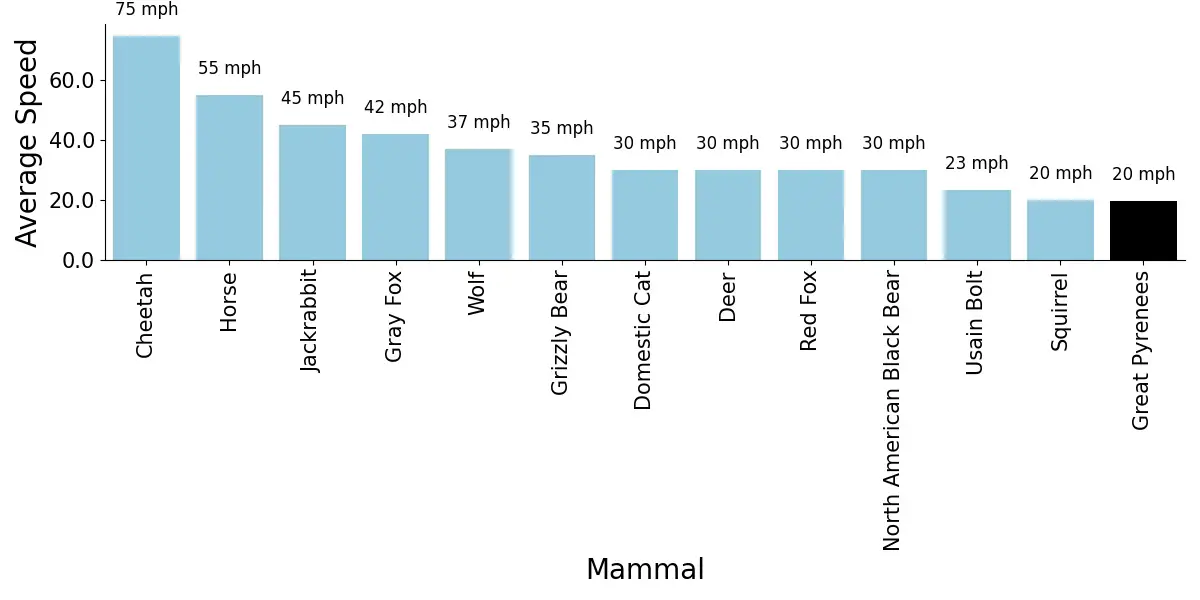
Good Names for Great Pyreneess
Here are some really good names that are typical for the Great Pyrenees ranked by popularity:
- Perry
- Gandalf
- Bear
- Riley
- Tofu
- Casper
- Harry
- Babka
- Piper
- Murphy
How Intelligent are Great Pyreneess?
| Great Pyrenees | |
|---|---|
| Intelligence Rank | 64 out of 130 dog breeds |
| Trainability | Tend To Learn New Commands After 40 To 80 Repetitions! |
According to Prof. Stanley Coren, a Canadian psychology professor/dog trainer, the total intelligence that a dog demonstrates is the addition of three types of intelligence. These intelligence types are:
- Instinctive Intelligence: This is the natural intelligence that comes from instinct. For example, dog breeds that have been historically bred to be guard dogs will have a high `guarding` intelligence compared to dogs that were not bred for guarding.
- Adaptive Intelligence (learning and problem-solving ability): This indicates what a dog can learn to do for himself or herself. Adaptive intelligence is specific to each dog, and not breed specific. You can improve your dog`s adaptive intelligence by investing time to train your dog.
- Working/Obedience Intelligence: This type of intelligence is breed-specific. Certain dog breeds tend to have higher working/obedience intelligence than some other breeds. This intelligence is the closest to what we might call school-learning ability and it is based upon what the dog can learn to do when instructed by humans. This type of intelligence can be measured for each dog breed and compared to that of other dog breeds.
Professor Stanley Coren measured and ranked the working intelligence of about 130 different dog breeds.
Prof. Coren found that the Great Pyrenees has an obedience intelligence rank of 64 out of 130 dog breeds. Thus, Prof. Coren put Great Pyreneess in the `Fair Working/Obedience Intelligence Dogs` category.
This means that Great Pyreneess tend to learn new commands after 40 to 80 repetitions!.
However, we should mention that a dog should not be judged based on its intelligence alone. There are other important factors you need to consider when deciding on which dog breed to get. These other factors include sociability, adorability, and compatibility of the dog breed with your lifestyle.
See the intelligence ranking of some other dog breeds below:
| Breed | Intelligence Rank |
|---|---|
| Border Collie | 1 |
| Rottweiler | 9 |
| Australian Cattle Dog | 10 |
| English Springer Spaniel | 13 |
| Belgian Malinois | 22 |
| Vizsla | 25 |
| Welsh Springer Spaniel | 31 |
| Norwegian Elkhound | 36 |
| Affenpinscher | 37 |
| Dalmatian | 39 |
| Kuvasz | 42 |
| Scottish Deerhound | 47 |
| Dachshund | 49 |
| Rhodesian Ridgeback | 52 |
| Dandie Dinmont Terrier | 62 |
| Bull Terrier | 66 |
| Chihuahua | 67 |
| Basset Hound | 71 |
| Borzoi | 75 |
| Chow Chow | 76 |
How Popular are Great Pyreneess with New Dog Owners?
Every year, the American Kennel Club (AKC) publishes information on how popular a dog breed is in that particular year. The AKC gets the popularity information of a breed from how many dogs of that breed the owners register with the AKC every year. The AKC collects this data for about 200 dog breeds.
The graph below shows the popularity trend of the Great Pyrenees.
The popularity of the Great Pyrenees averaged over the years is Number 68 out of about 200 dog breeds.

Do not get a dog breed just because it is a popular dog breed. And do not reject a dog breed just because it is an unpopular breed.
Health Problems in Great Pyreneess and How to Prevent Them
Every dog breed has its own set of health problems that it tends to develop. There is nothing like a perfect dog breed.
The Great Pyrenees is prone to certain genetic health conditions. The Orthopedic Foundation for Animals (OFA) is an organization that keeps track of genetic health problems in dog breeds.
From the extensive records that the OFA keeps, the OFA knows what health problems each dog breed is naturally prone to develop.
Hence, the OFA recommends which health screening breeders should perform on a dog breed to make sure that the breeders won`t breed `defective` dog parents that can pass down defective genes to their puppy offspring.
If you want a Great Pyrenees puppy that will grow up to be healthy, make sure that your Great Pyrenees breeder screens your puppy or your puppy`s parents for the health problems that the OFA recommends for your puppy`s breed. This will increase the chances that your puppy is free from genetic defects.
The following are the health tests that Orthopedic Foundation for Animals (OFA) recommends that breeders should screen Great Pyreneess for:
You can find out more about OFA`s recommended tests for Great Pyreneess here.
How to Take Care of Great Pyrenees
To take good care of your Great Pyrenees, you need to make sure that you groom your Great Pyrenees regularly.
Secondly, you need to find a veterinarian in your area that will routinely check the health status of your Great Pyrenees regularly, and give you appropriate recommendations on your Great Pyrenees`s preventative care.
Thirdly, you need to commit some time to exercise your Great Pyrenees daily. Regular exercise helps improve the health and quality of life of your Great Pyrenees.
Also, you need to feed your Great Pyrenees high-quality dog food, and the food should be of the right amount to prevent your Great Pyrenees from getting overweight or underweight.
See our recommendations on what to feed the Great Pyrenees and how much food to feed the Great Pyrenees at different life stages.
Finally, you need to make sure that your Great Pyrenees has access to clean water all the time. See our recommendations on how much water your Great Pyrenees needs to drink at different ages.
Dog Breeds That Are Similar to Great Pyreneess
If you have not made up your mind on which dog breed to get, you may also want to consider some other dogs similar to the Great Pyrenees.
We crunched the numbers and found that the following dog breeds that have similar behavior and temperament as the Great Pyrenees:
- Black and Tan Coonhound (73 percent match with Great Pyrenees). Learn more about the Black and Tan Coonhound here.
- Greater Swiss Mountain Dog (72 percent match with Great Pyrenees). Learn more about the Greater Swiss Mountain Dog here.
- Treeing Walker Coonhound (75 percent match with Great Pyrenees). Learn more about the Treeing Walker Coonhound here.
Other Things to Know About Great Pyreneess
Here are some of the very important characteristics of the Great Pyrenees that you need to know about the Great Pyrenees breed:
